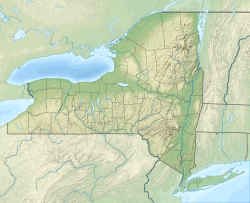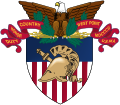| West Point Cemetery | |
|---|---|
 West Point Cemetery's old section in January 2009 | |
 | |
| Details | |
| Established | 1817, [1] 208 years ago |
| Location | |
| Country | United States |
| Coordinates | 41°23′56″N73°58′02″W / 41.3990086°N 73.9673426°W |
| Type | Military |
| Owned by | U.S. Military Academy |
| No. of graves | Approximately 10,000 |
| Website | https://www.westpoint.edu/about/west-point-cemetery |
| Find a Grave | West Point Cemetery |
West Point Cemetery is a historic cemetery on the grounds of the United States Military Academy in West Point, New York. It overlooks the Hudson River, and served as a burial ground for Continental Army soldiers during the American Revolutionary War, and for early West Point residents prior to its designation as a military cemetery in 1817.
Contents
Northwest of the cadet area, it was known as "German Flats" before its formal designation as the official cemetery in 1817. [2] Until that time several small burial plots scattered in mid-post also served as places of interment. The graves from these plots and the remains subsequently found during building excavations were removed to the new site.
An improved road to the cemetery was constructed in 1840, and the caretaker's cottage was erected in 1872. [1] The cemetery is home to several monuments, including the Dade Monument, Cadet Monument, Custer Monument, Wood's Monument, and Margaret Corbin Monument.




